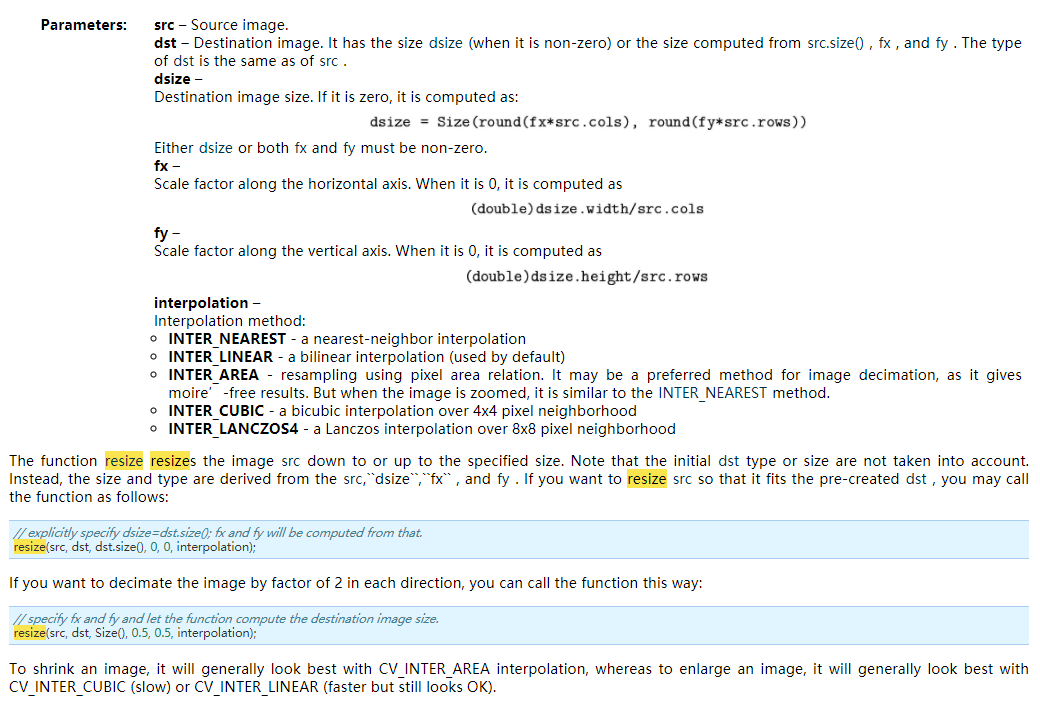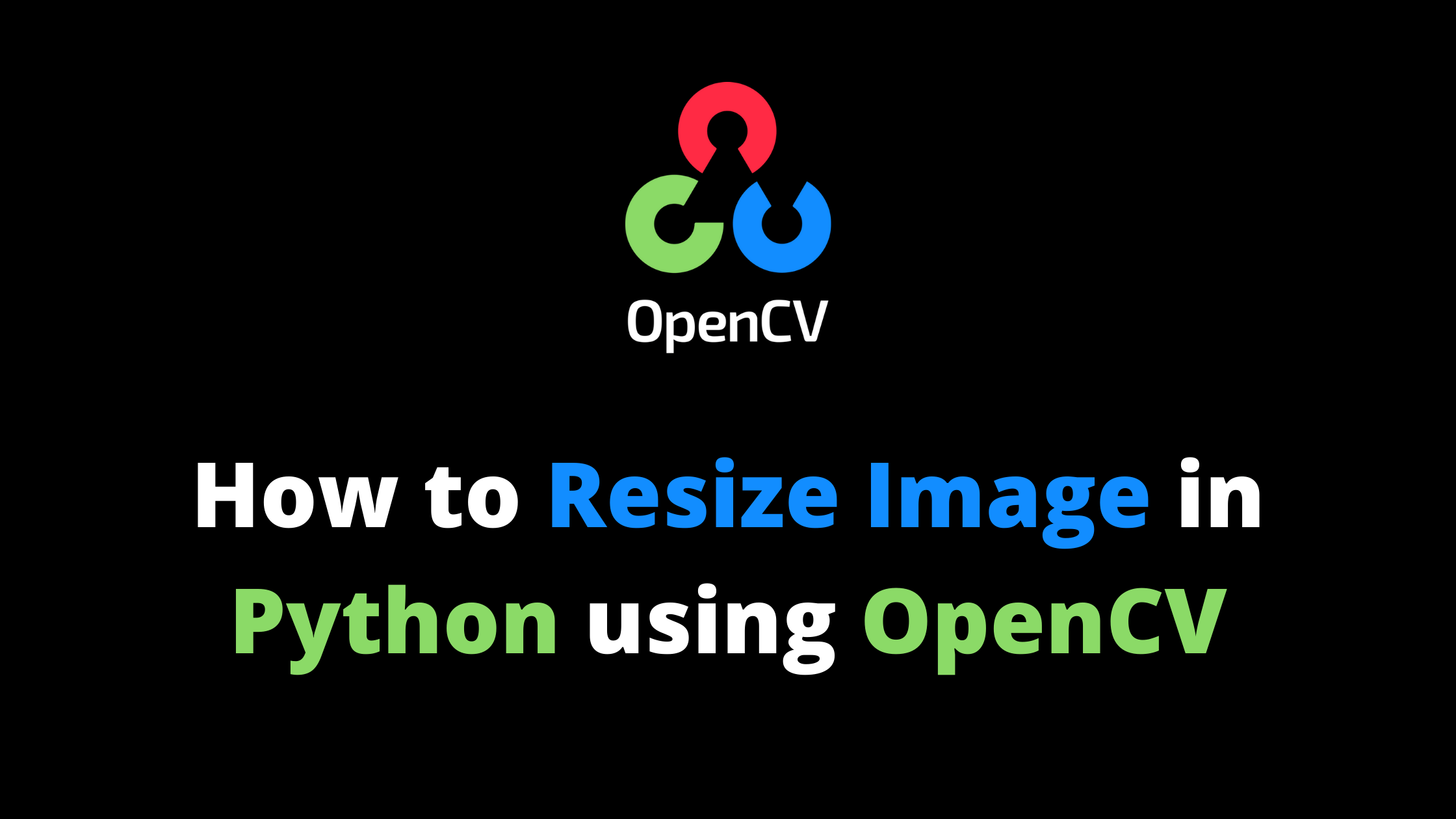
Target.getWantedScore() * 100, new Date().
#Resize image opencv license#
License:Apache License Override public void onTrigger( final ProcessContext context, final ProcessSession session) throws ProcessException )

Prototype public static void resize(Mat src, Mat dst, Size dsize, double fx, double fy, int interpolation)įrom source file: .java Img_new_padded = cv2.copyMakeBorder(img_new, 0, pad_bot, 0, pad_right, borderType=cv2.BORDER_CONSTANT, value=0)Ĭv2.IntroductionIn this page you can find the example usage for Imgproc resize. Img_new = cv2.resize(img, (preferred_width, preferred_height)) Pad_right = get_nearest_larger(preferred_width) - preferred_width Preferred_width = round(preferred_height / height * width) Pad_bot = get_nearest_larger(preferred_height) - preferred_height Preferred_height = round(preferred_width / width * height) #gets the nearest larger 64, starting with 512 resizing happens on a capture device using a FPGA resizing an image using a CPU (using an interpolation algorithm) resizing an image using memory views/. New_filename = output_directory + "/" + f_name.replace("."+str(get_file_ext(filename)), "."+output_ext).replace(" ", "_") # this will return a tuple of root and extension

However, resize() requires that you put in either the destination size (in. Also I only pad to the right and to the bottom since in my experience, those are the areas for which inpainting is usually most useful. You can use resize() in OpenCV to resize the image up/down to the size you need. I have chosen a color of white for padding since the Stable Diffusion WebUI tool uses a black mask and this way I can easily see what has been masked and what hasn’t. OpenCV automatically determines the file format based on the extension, so you do not need to specify it explicitly. Output images are renamed to _scaled.png. Most other image file formats are supported though (such as JPEG, PNG, BMP, TIFF, WEBP and others). OpenCV does not support the AVIF file format (read here) that’s why I included the option to exclude extensions to allow processing of directories which have mixed content, for example obtained by scraping the web. It demonstrates how OpenCV can be used to easily perform basic tasks such as opening a file, resizing, padding, and writing the output back to the filesystem. The script is straightforward and can be viewed below or here.
#Resize image opencv install#
This can be done with: “pip install opencv-python” or “conda install -c conda-forge opencv” (whichever package manager you prefer). Batch resize and pad images using Python and OpenCV Batch resize and pad imagesįirst you need to install OpenCV. I chose to use OpenCV because it is a widely-used, easy-to-use library with powerful capabilities. To automate this process for a large number of images, I wrote a Python script using OpenCV. The parameter inside cv2.resize () is the shape of the new resized image. However, this results in a size that is not a multiple of 64, so the image needs to be padded to 1536×512 in order to be processed by the model. Here, resize function is used to resize an image to the desired shape. Luckily, OpenCV, PyTorch and TensorFlow provide interpolation algorithms for resizing so that we can compare them easily (using their respective Python APIs). If you have an image that is not a multiple of 64, like 599×205 pixels, you can maintain the aspect ratio by resizing it to 1496×512. resizing an image using a CPU (using an interpolation algorithm) resizing an image using memory views/pointers on host memory resizing an image using both options on a GPU Setup Notes. Stable Diffusion (at least 1.5) works best with images of 512 pixels in width or height. In case of Stable Diffusion, multiples of 64 are required. When using AI models like Stable Diffusion, sometimes input images need to be of a specific size.


 0 kommentar(er)
0 kommentar(er)
